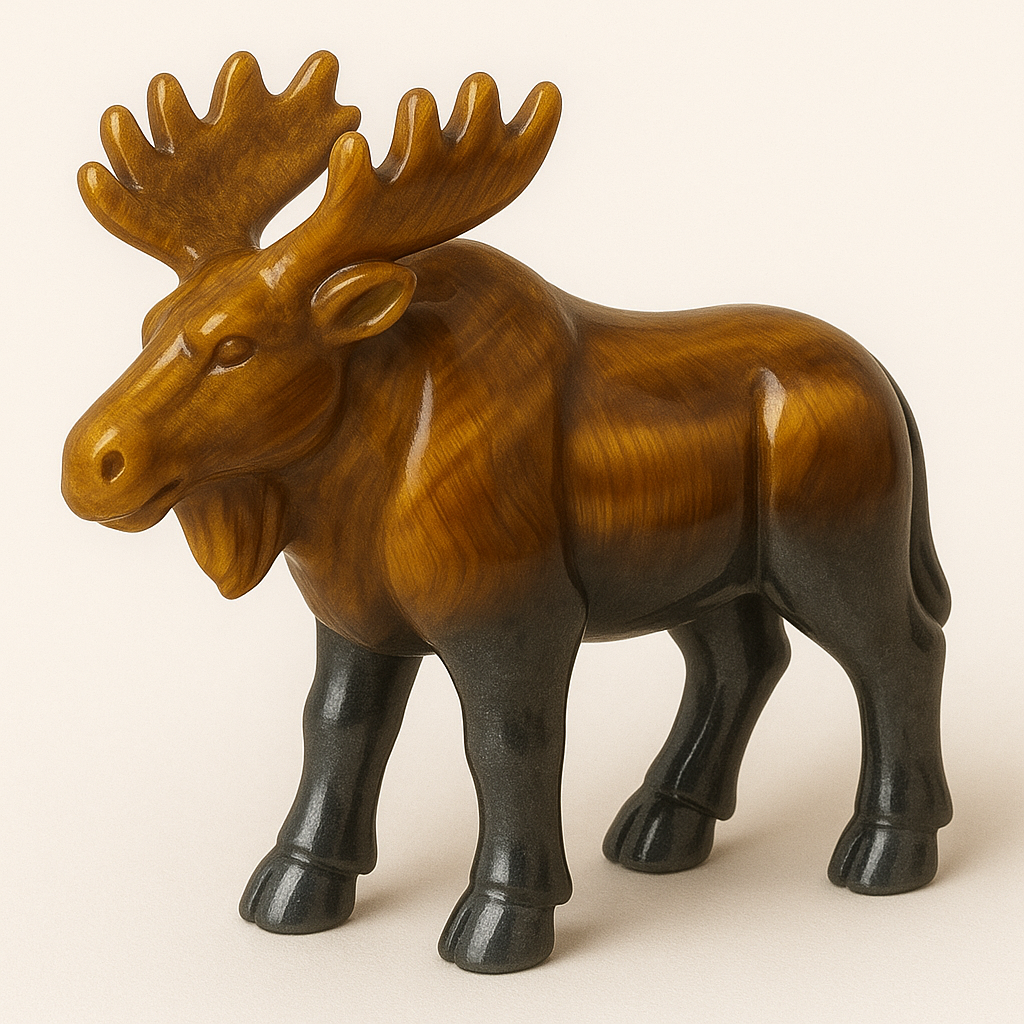
The Symbolism of Moose
Share
Solitary and sovereign, the moose is a being of quiet magnitude. Its presence is not declared—it is simply known. Towering, yet gentle, it walks through forest and water with calm authority, unbothered by the gaze of others. The moose is an emblem of dignified strength, inner balance, and the majesty that arises when one is fully at peace with their own nature. It teaches that true power makes no noise.
To contemplate the moose is to encounter the archetype of solitude without isolation, of power without performance, and of the self who walks alone not from lack, but from fullness.
The Sovereign Walker in Cultural Memory
In many Indigenous cultures of the northern lands, the moose is seen as a provider spirit, a source of meat, bone, and hide—but also of wisdom. To hunt the moose was never taken lightly; it was considered a spiritual event, requiring respect, permission, and gratitude, as the moose stood close to the spirit world, both physically elusive and metaphysically significant.
In shamanic journeys, the moose often appears as a guide of self-possession and strength of spirit—one who teaches how to walk alone without becoming lost, and how to trust one’s pace in a world of noise. Its antlers, reaching upward like branches, symbolize spiritual receptivity grounded in Earth-based dignity.
Among Nordic peoples, the moose has long been associated with the wild forest spirits, a bridge between civilization and the raw, untamed mystery of nature. It is the guardian of liminal spaces—where water meets wood, where land remembers itself.
Strength, Silence, and the Path of Self-Knowing
The moose does not gather in large herds. It walks alone or with a mate, often appearing without warning from dense forest or still waters. It does not compete. It does not flee. It simply exists as it is—anchored, sure, and unwilling to compromise its rhythm for anyone.
Its size is immense, yet it does not use this to threaten. It is peaceful unless provoked, and even then, it responds with precision, not chaos. Its calm teaches that confidence need not be declared—it is felt.
The antlers of the moose grow and fall in cycles, reflecting the natural rhythm of growth, release, and renewal. It teaches the seeker to honor one’s seasons, to know when to carry weight, and when to let it fall.
The moose is not aloof—it is simply whole.
Resonance with the Energy Centers
The moose resonates primarily with the yellow-ray energy center—the solar plexus chakra, which governs identity, self-confidence, autonomy, and the relationship between self and environment.
Its every motion expresses yellow-ray clarity: this is who I am, and I do not require permission to be so. The moose does not need validation. It exists in alignment with its own field, radiating strength that is centered, not controlling. This yellow-ray is sovereign, not separative.
There is also a secondary resonance with the red-ray energy center—the root chakra, which governs stability, survival, and deep trust in the physical self.
The moose’s embodiment of grounded motion, its comfort in both land and water, and its deep attunement to instinct reflect a balanced red-ray foundation. It moves through dense terrain with ease, teaching that when the root is secure, the path is navigable—even in wilderness.
Together, yellow and red move through the moose as:
autonomy grounded in being,
strength expressed through calm,
and dignity shaped by silence, not show.
The One Who Walks Alone in Peace
To walk with the moose is to remember that solitude can be sacred, that presence can be strength, and that the self need not shrink to connect, nor expand to impress. The moose teaches the seeker to honor personal rhythm, to move slowly and surely, and to trust that the path of selfhood is not lonely—it is whole.
The moose does not rush.
It chooses its steps.
It does not demand space.
It already has it.
It teaches:
Walk tall.
Stand firm.
And let your quiet speak what words cannot.